Since its fabrication in the 20th century, stainless steel has been an important material in many projects due to its durability, high machinability, weldability, and flexibility. It contains several elements in different percentages, responsible for the different grades known today. Each grade has unique properties, and two grades’ comparison, which is as timeless as their fabrication, is the 304 vs 316 stainless steel.
Both the SS 304 and SS 316 are austenitic stainless steels used in different capabilities in rapid prototyping processes such as sheet metal fabrication and CNC machining. However, choosing from the 304 vs 316 stainless steel comparison must be made specifically to a project, i.e., you must understand their properties. To help you decide on the right grade, this article highlights the properties, benefits, and applications of the SS 304 and SS 316. Below is a full comparison of the stainless 304 vs 316.
304 Grade Stainless Steel
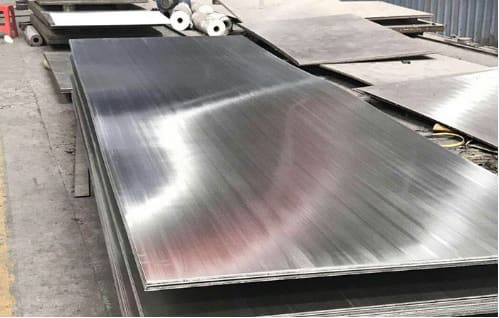
Stainless steel 304 is the most widely ordered stainless steel grade in the world. It is an austenitic SS variant with 8 to 10.5% nickel, 18-20% of chromium, and other elements such as carbon, manganese, and silicon. These constituents make SS 304 highly heat resistant and corrosion resistant, and it is applicable in different industrial and commercial settings.
SS 304 is the most ordered stainless steel grade due to its properties and characteristics. It is an important material in many industries. Because of its excellent corrosion resistance, it’s functional and aesthetically great in different environments. Its machinability and weldability also make it a top choice in CNC machining and sheet metal fabrication. Many people love its aesthetic appeal evident in its use in making parts used in high-rise buildings and skyscrapers.
316 Grade Stainless Steel
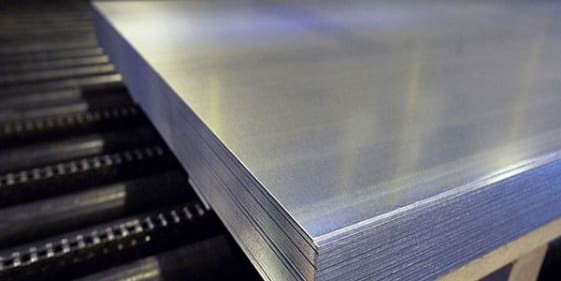
316 stainless steel or grade 316 SS is austenite that contains a max carbon content of 0.08%, nickel 10%, chromium 16%, and a molybdenum content between 2-3%. As austenitic steel, it is highly heat resistant, machinable, weldable, and has great tensile strength. The 2% molybdenum further makes it corrosion resistant in saline and freshwater, known for its high chloride contents.
The benefits of the 316 stainless steel put the grade in a different class in the stainless 304 vs 316 comparisons. Unlike the other grade, 316 stainless steel is highly corrosion resistant in acidic, alkaline, and chloride environment due to the higher nickel content and additional 2% of molybdenum. It is also flexible, machinable, and weldable making it another top rapid prototyping material. SS 316 is also a common sight in the medical industry as its hard surface prevents the adherence and survival of the microbes.
If you can’t distinguish 316 vs 316L stainless steel, this article can help you.
304 vs 316 Stainless Steel – 7 Differences
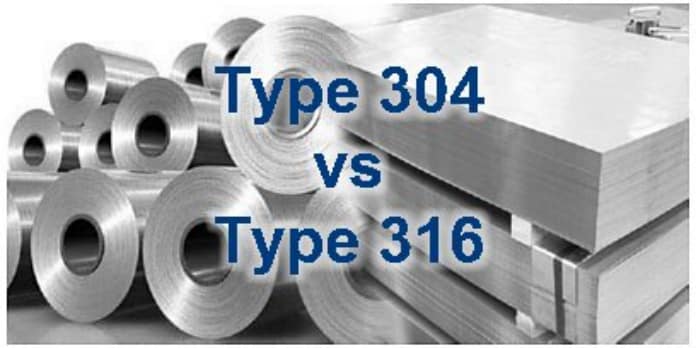
To choose the right stainless steel grade from the AISI 304 vs 316 stainless steel comparison, there is a need to understand the differences between 304 and 316 stainless steel. Below are seven main differences you need to watch out for so you can get the right grade for your project.
1. Chemical Composition Difference
The major difference in the stainless 304 vs 316 comparison is due to their chemical composition. Below is the difference in the chemical composition of the two stainless steel grades.
304 stainless steel: 18% chromium, 8% nickel
316 stainless steel: 16% chromium, 10% nickel and 2% molybdenum
From the chemical composition, SS 316 has lesser chromium, and more nickel, and unlike SS 304, it has 2% molybdenum. The different properties and applications exhibited by both grades come as a result of these differences.
2. Mechanical Properties Difference
Major mechanical properties you should check when choosing stainless steel types are tensile strength, yield strength, compression strength, and shear modulus. Below are the stainless 304 vs 316 comparisons based on each property.
Tensile Strength
Tensile strength is the energy needed to split a material part or how much it can be stretched before it breaks.
SS 304 with a thickness of 8mm has a tensile strength of 520-720 MPa; 304 with a thickness of 8-75 mm has a tensile strength of 540-750; Stainless steel 304 with 160 mm thickness bar has a tensile strength of 500-700 MPa.
SS 316 with a thickness of 8mm has a tensile strength of 530-680 MPa; 316 with a thickness of 8-75 mm has a tensile strength of 520-670; SS 316 with 160 mm thickness bar has a tensile strength of 500-700 MPa.
Yield Strength
Yield strength is the maximum force you can apply to the metal before it changes shape permanently. 304 stainless steel has a yield strength of 215MPa, while 316 stainless steel has a yield strength of 290MPa. This means that SS 316 is more suitable for making products subjected to more force than SS 304.
Hardness
Hardness is a property that dictates how well a material will resist deformation, abrasion, penetration, and indentation. Stainless steel 316 has a hardness of 79 Rockwell B and SS 304 has a hardness of 70 Rockwell B. Although the difference is not much, 316 stainless steel would be better suited for projects more friction inclined.
Modulus of Elasticity
Modulus of elasticity shows the relationship between stress and strain and the response of the metal to deformation. 316 stainless steel has a modulus of elasticity of 164 GPa, while 304 stainless steel has a modulus of elasticity of 193-200 GPa. This shows that SS 304 has a better response to deformation.
3. Corrosion Resistance Difference
316 stainless steel has better corrosion resistance than 304 stainless steel. 304 stainless steel has an anti-corrosive property like normal stainless steel. However, the inclusion of the 2% molybdenum in the SS 316 helps make the grade resistant to chlorine while improving its resistance to acid and alkalis.
Consequently, SS 316 is more suitable for making products used in a marine environment exposed to chlorides or other oxidation agents, although SS 304 still offers excellent corrosion resistance.
4. Temperature Resistance Difference
Temperature resistance is an important attribute to consider when products are used in high-temperature environments. 304 stainless steel has a higher temperature resistance with its melting point 50 to 100 0F higher than 316 stainless steel.
- SS 304: Has good heat resistance; however, continuous use at 425-860 °C (797-1580 °F) might lead to corrosion.
- SS 316: Has good heat resistance at a temperature above 843 ℃ (1550 ℉) and below 454 ℃ (850°F).
5. Lasting Durability
Durability is the measure of how strong a material is and its ability to resist wear and tear, corrosion, fatigue, deformation, and heat. Both grades 316 and 304 are durable which ensures their use in stringent manufacturing structures. However, the SS 316 has a slight edge due to the better corrosion resistance.
6. Weldability and Formability
Weldability depends on the amount of carbon in the grade, as an increase in carbon will reduce the weldability. Both SS 304 and SS 316 have a carbon level of 0.08% and a slight difference in other contents. The slight difference in their constituents results in a slight difference in their weldability, although both grades are readily welded using arc welding processes.
7. Price Difference Between SS304 and SS316
304 stainless steel has an advantage in terms of price. The SS 316 has a higher price (75% more than the SS 304) due to the extra chemical elements. This results in a complex manufacturing process. Also, the extra constituent improves its corrosion resistance and ultimately its value.
Common Applications of Stainless 304 & 316
Stainless steels are applicable in different industries due to their anti-corrosive properties. However, different grades either improve this ability or enhance other properties such as durability, hardness, and tensile strength. For 304 and 316 stainless steel, both grades have unique properties and a wide range of applications. Below are a few common applications of the stainless steel grades.
· Aerospace Industry
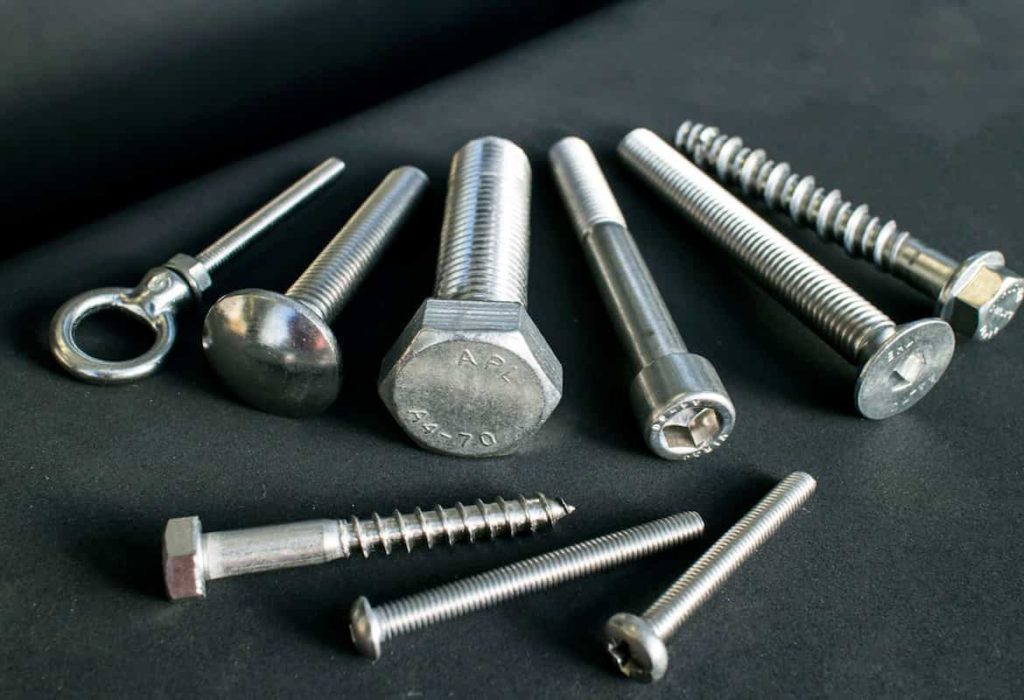
Stainless steel is a material of huge favor in making parts used in the aerospace industry, for example, it can be used to manufacture CNC machining aerospace parts. This comes as a result of its lightweight, tensile strength, corrosion resistance, and extreme durability. Both SS 304 and SS 316 are suitable for making aerospace parts such as actuators, fasteners, landing gear components, etc., as they possess these properties.
· Medical Equipment
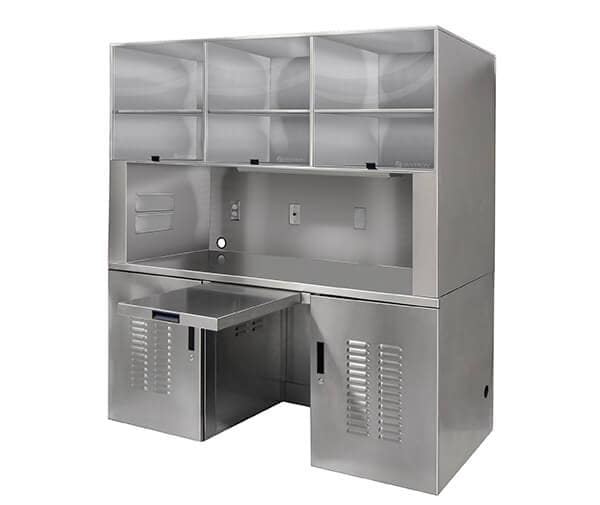
Medical equipment must be rust and corrosion-resistant, easy to clean, and antimicrobial in action. Both materials being stainless steel grade, have these characteristics, making them suitable for making medical equipment and devices such as scalpels and implants.
· Household Equipment
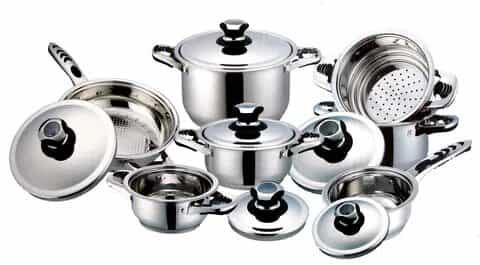
Both stainless steel grades are suitable for making household utensils such as knives and cutleries. They are suitable based on their mechanical properties, durability, heat resistance, and aesthetic appeal.
· Food and Drinks
The SS 304 and SS 316 grades are suitable for making containers for foods and drinks due to their tensile strength and durability. More importantly, they have anti-corrosive properties as they do not react with acids and alkalis. Consequently, they are compatible with many food products with or without mild salt content. Also, they have a smooth surface which makes cleaning and disinfection very easy.
Which One Is More Suitable for Your Application, SS304 or SS316?
After checking through the benefits, differences, and applications of the two SS grades, you might want the ultimate answer to the 304 vs 316 stainless steel comparison, i.e., which one is better? As you will expect, there is no single answer. However, to help you, we will answer some questions below to help you choose the right one for your project.
· What environment will the product be used in?
Any of the two stainless steel grades are suitable for corrosive environments. However, in acidic, salty, or chloride environments, it is better to go with the AISI 316 as its 2% Molybdenum content makes it have high corrosion resistance.
· What is the temperature of the operation?
Temperature can lead to corrosion. Therefore, in situations where there is a high temperature (> 843 ℃ and < 454 ℃) at the site of operation, 316 stainless steel is a better choice.
· What is your budget?
If the need for the above properties does not matter, AISI 304 is a good choice as it costs about 25% of AISI 316.
Choosing the right one of the two stainless steel grades for your project might be challenging. That is why it is important to consider their properties, benefits, differences, and the relevance of their major applications to your project. For you, this might be a long shot, and with RapidDirect, you have a chance of choosing the right material.
Conclusion
The SS304 VS SS316 comparison has been going on for a long time, and selecting the right one is only possible by understanding their properties, benefits, and applications. If you are in the process of deciding on the right one, this article introduces these criteria and how you decide on the right one. While this might be helpful, a better choice would be to outsource to a reputable rapid prototyping service with the experience to help you select the right material. This is where RapidDirect comes in.
RapidDirect is a professional and reputable rapid prototyping service well versed in rapid prototyping services such as CNC machining service, sheet metal fabrication service, injection molding, 3D printing, and more. We provide professional stainless steel solutions and can help you manufacture high-quality steel products for many industries, such as aerospace, medical devices, and more. We also offer an instant quote and DfM feedback which ensures a better manufacturing process. Are you confused about choosing the right material? Contact us, and our expert team can help you.
FAQS
The answer is not straightforward. There are many grades of stainless steel tailored for unique purposes. Therefore, it is incorrect to say that one of the two stainless steel is better than the other. Choosing the right one depends on your projects and the required mechanical properties, chemical properties, and features.
Yes, 316 stainless steel has both anti-rust and anti-corrosive properties due to the presence of nickel, molybdenum, and chromium. Therefore, it is suitable for working in an environment that supports rusting and corrosion.
The cost difference in the stainless 304 vs 316 comparison is a result of its chemical composition. 316 stainless steel is costlier than 304 stainless steel. The 2% molybdenum and the increase in nickel content increase manufacturing costs. Also, it gives the grade a better corrosion resistance which increases its value/cost.


